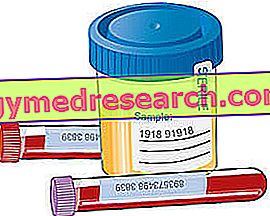
What is Grastofil - filgrastim and what is it used for?
Grastofil is a medicine that contains the active substance filgrastim . It is used to stimulate the production of white blood cells in the following situations:
- to reduce the duration of neutropenia (low levels of neutrophils, a type of white blood cell) and the incidence of febrile neutropenia (neutropenia with fever) in patients undergoing chemotherapy (anticancer treatment) cytotoxic (cell destroyer);
- to reduce the duration of neutropenia in patients undergoing treatment aimed at destroying bone marrow cells before a bone marrow transplant (for example, in some patients with leukemia) if they are at risk of long-term severe neutropenia;
- to contribute to the release of cells from the spinal cord in haematopoietic stem cell donor patients for transplantation;
- to increase neutrophil levels and reduce the risk of infection in patients with neutropenia who have a history of serious and repeated infections;
- to treat persistent neutropenia in patients with advanced human immunodeficiency virus (HIV) infection, in order to reduce the risk of bacterial infections when other treatments are inadequate.
Grastofil is a "biosimilar medicine". This means that Grastofil is similar to a biological medicine (the 'reference medicine') already authorized in the European Union (EU) and that Grastofil and the reference medicine contain the same active substance. The reference medicine for Grastofil is Neupogen. For more information on biosimilar medicines, see the questions and answers by clicking here.
How is Grastofil - filgrastim used?
Grastofil is available as a solution for injection or infusion (drip) in pre-filled syringes. It is given by injection under the skin or infusion into a vein. The medicine can only be obtained with a prescription, and the therapy must be carried out in collaboration with an oncology center. The method of administration of Grastofil, the dosage and duration of treatment depend on the reason for its use, the patient's body weight and the response to treatment. For more information, see the summary of product characteristics (included with EPAR).
How does Grastofil - filgrastim work?
The active substance in Grastofil, filgrastim, is very similar to a human protein called granulocyte colony stimulating factor (G-CSF). Filgrastim acts like the naturally produced G-CSF factor, stimulating the bone marrow to produce more white blood cells. The filgrastim present in Grastofil is produced using the "recombinant DNA technology" method: it is obtained from bacteria in which a gene (DNA) has been introduced that allows them to produce filgrastim.
What benefit has Grastofil - filgrastim shown during the studies?
Grastofil was examined in one main study involving 120 adult patients with breast cancer treated with chemotherapy (medicines used to treat cancer) known to cause neutropenia. Patients underwent chemotherapy on day 1 of a three-week cycle and then received a dose of Grastofil the next day and daily for a maximum period of 14 days. The main measure of effectiveness was the duration of severe neutropenia. Severe neutropenia lasted on average 1.4 days, compared with 1.6 and 1.8 days reported in the studies available in the filgrastim literature. Data from published studies indicate that the benefits and safety of filgrastim are similar in both adults and children receiving chemotherapy. Studies have also been conducted to show that Grastofil produces levels of the active ingredient in the body comparable to those obtained with the reference medicine, Neupogen.
What is the risk associated with Grastofil - filgrastim?
The most common side effect with Grastofil (seen in more than 1 patient in 10) is musculoskeletal pain (muscle and bone pain). Other side effects may be seen in more than 1 in 10 patients, depending on the condition for which Grastofil is used. For the full list of all side effects reported with Grastofil, see the package leaflet.
Why has Grastofil - filgrastim been approved?
The Agency's Committee for Medicinal Products for Human Use (CHMP) decided that, in accordance with EU requirements, Grastofil has been shown to have a comparable quality, safety and efficacy profile to Neupogen. Therefore, the CHMP considered that, as in the case of Neupogen, the benefits outweigh the identified risks and recommended the authorization of the use of Grastofil in the EU.
What measures are being taken to ensure the safe and effective use of Grastofil - filgrastim?
A risk management plan has been developed to ensure that Grastofil is used as safely as possible. Based on this plan, safety information has been included in the summary of product characteristics and the package leaflet for Grastofil, including the appropriate precautions to be followed by healthcare professionals and patients. In addition, the company that markets Grastofil will conduct studies to confirm the long-term safety of the medicine.
Further information on Grastofil - filgrastim
On 18 October 2013, the European Commission issued a marketing authorization for Grastofil, valid throughout the European Union. For more information about treatment with Grastofil, read the package leaflet (also part of the EPAR) or contact your doctor or pharmacist. Last update of this summary: 05-2014.



